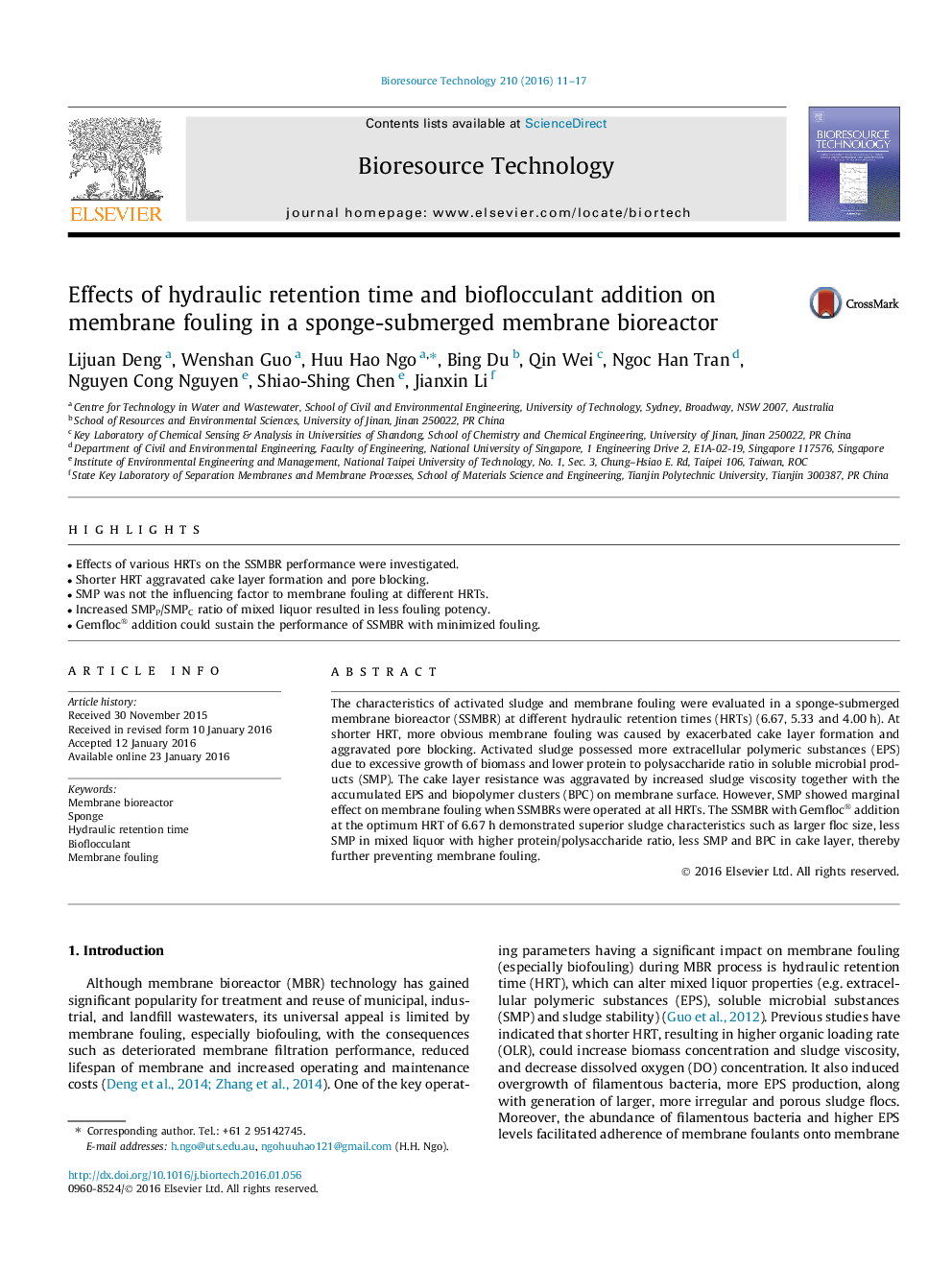| Article ID | Journal | Published Year | Pages | File Type |
|---|---|---|---|---|
| 679007 | Bioresource Technology | 2016 | 7 Pages |
•Effects of various HRTs on the SSMBR performance were investigated.•Shorter HRT aggravated cake layer formation and pore blocking.•SMP was not the influencing factor to membrane fouling at different HRTs.•Increased SMPP/SMPC ratio of mixed liquor resulted in less fouling potency.•Gemfloc® addition could sustain the performance of SSMBR with minimized fouling.
The characteristics of activated sludge and membrane fouling were evaluated in a sponge-submerged membrane bioreactor (SSMBR) at different hydraulic retention times (HRTs) (6.67, 5.33 and 4.00 h). At shorter HRT, more obvious membrane fouling was caused by exacerbated cake layer formation and aggravated pore blocking. Activated sludge possessed more extracellular polymeric substances (EPS) due to excessive growth of biomass and lower protein to polysaccharide ratio in soluble microbial products (SMP). The cake layer resistance was aggravated by increased sludge viscosity together with the accumulated EPS and biopolymer clusters (BPC) on membrane surface. However, SMP showed marginal effect on membrane fouling when SSMBRs were operated at all HRTs. The SSMBR with Gemfloc® addition at the optimum HRT of 6.67 h demonstrated superior sludge characteristics such as larger floc size, less SMP in mixed liquor with higher protein/polysaccharide ratio, less SMP and BPC in cake layer, thereby further preventing membrane fouling.
